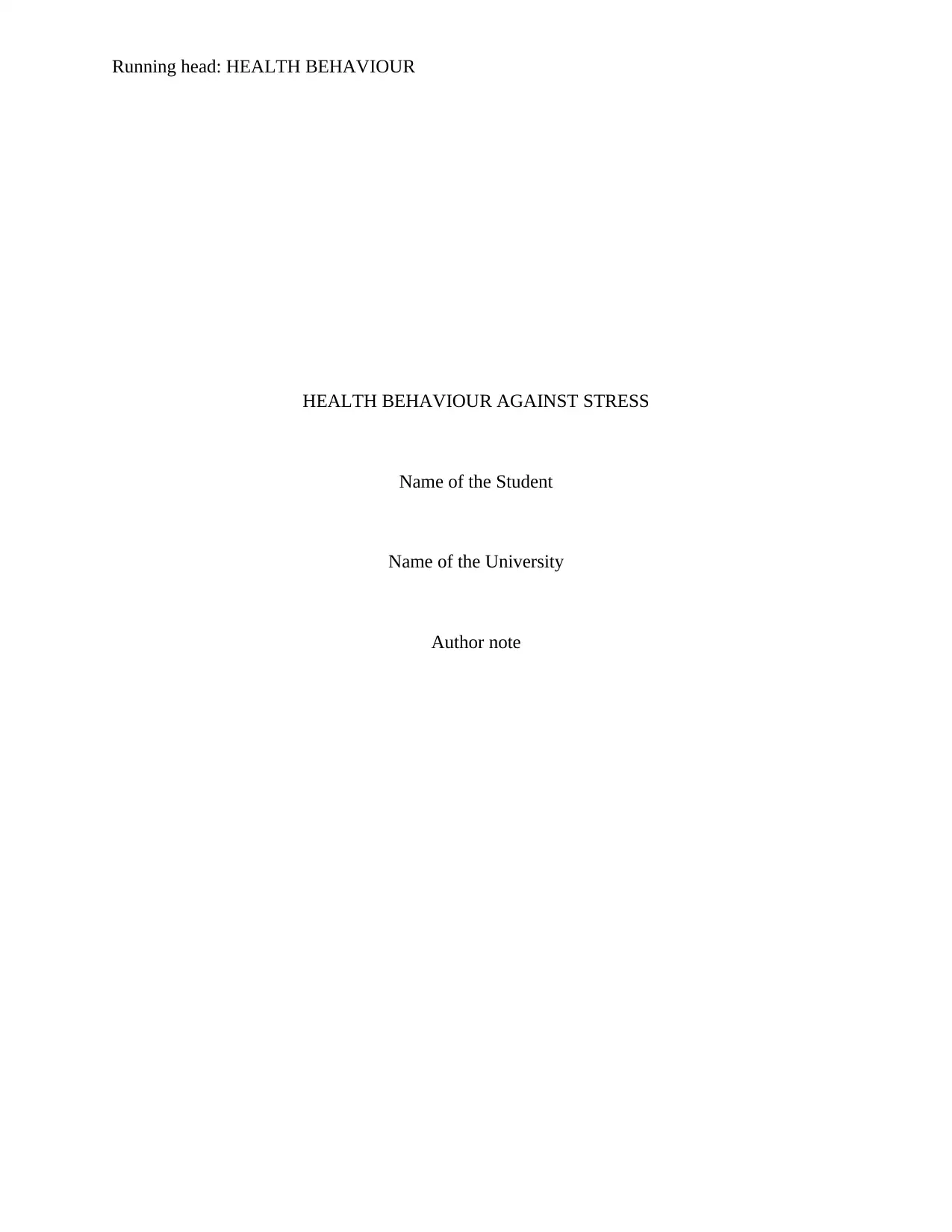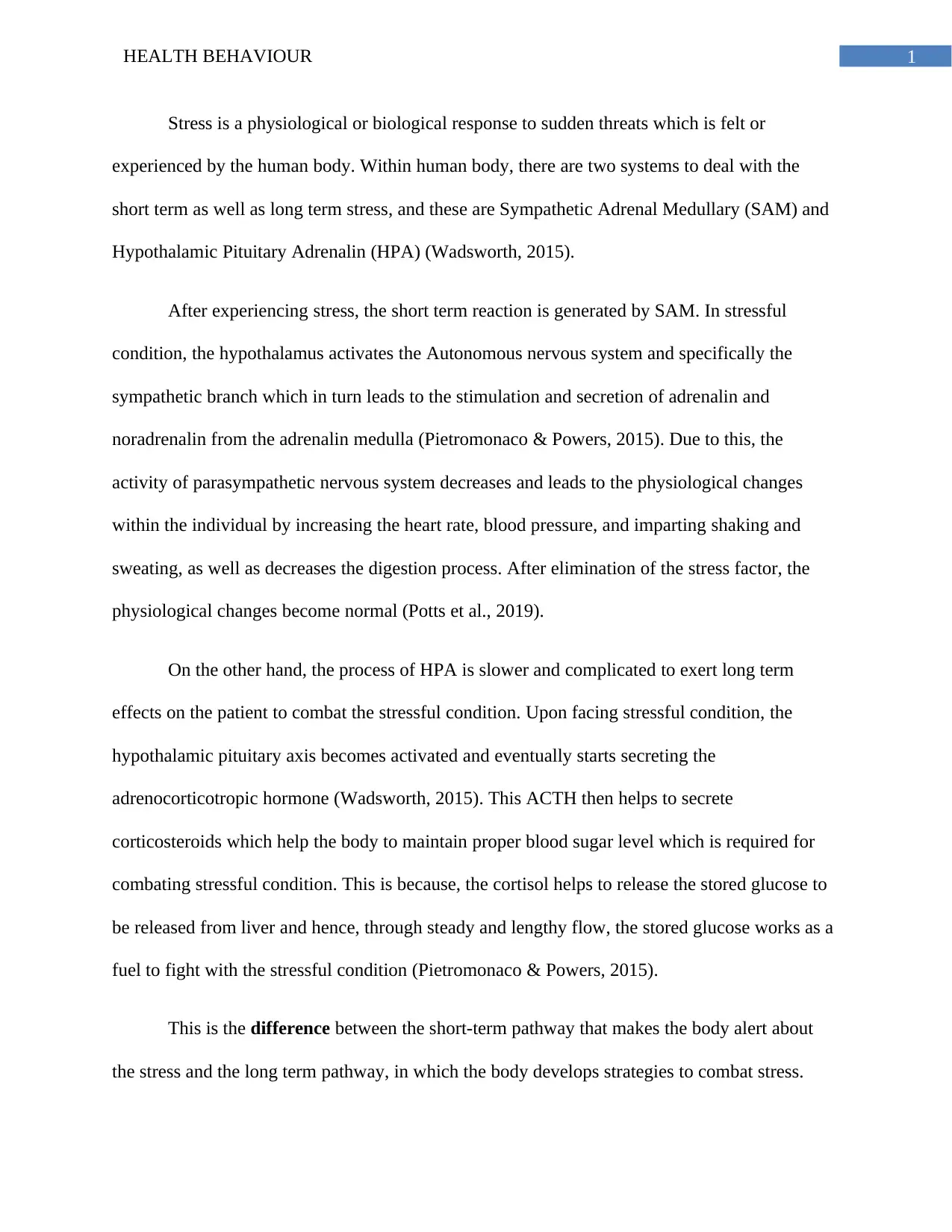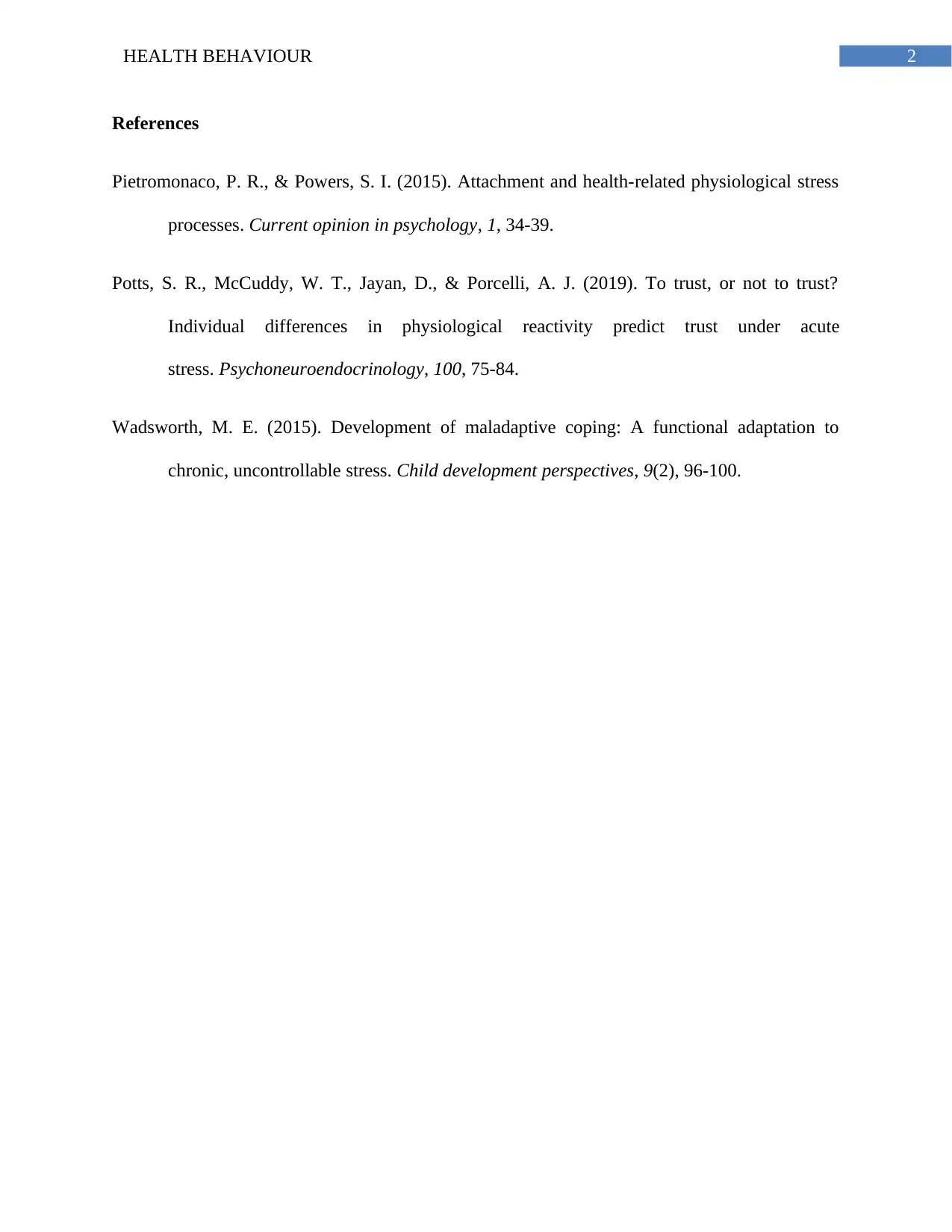Health Behavior Analysis: Stress Management and Physiological Effects
VerifiedAdded on 2023/04/23
|3
|474
|193
Report
AI Summary
This report delves into the intricate relationship between health behavior and stress, examining the physiological responses the body undergoes when faced with stressful situations. It explores the two primary pathways involved: the Sympathetic Adrenal Medullary (SAM) system, responsible for immediate reactions, and the Hypothalamic Pituitary Adrenalin (HPA) axis, which manages long-term stress responses. The report highlights the roles of key hormones like adrenaline and cortisol, as well as the physiological changes they trigger, such as increased heart rate, blood pressure, and blood sugar levels. It also differentiates between the short-term and long-term effects of stress on the body. The report references several sources to substantiate its claims, providing a comprehensive overview of how the body reacts to and attempts to manage stressful conditions.
1 out of 3






![[object Object]](/_next/static/media/star-bottom.7253800d.svg)